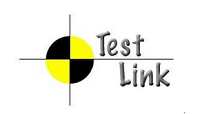Description

Kualitee

TestRail
Comprehensive Overview: Kualitee vs TestRail
Kualitee and TestRail are both test management tools that are designed to streamline the software testing process. They provide platforms for managing test cases, executing tests, and tracking defects. Here's a comprehensive overview of each tool, including their primary functions, target markets, market share, and differentiating factors:
Kualitee
a) Primary Functions and Target Markets:
-
Primary Functions:
- Test Management: Kualitee allows users to create, execute, and manage test cases and test cycles effectively.
- Defect Management: It provides tools for logging, tracking, and managing defects or bugs discovered during testing.
- Reporting and Analytics: The platform includes reporting features that offer insights into testing progress and quality metrics.
- Integration with Other Tools: Kualitee integrates with popular tools such as Jira, Bitbucket, Selenium, and Jenkins to enhance workflow and automation.
- Collaboration Features: It supports team collaboration, providing a way for multiple users to work together seamlessly during the testing process.
-
Target Markets:
- Typically aimed at small to medium-sized enterprises (SMEs) and independent testers who need a cost-effective, flexible test management tool.
- Industries where development and testing are critical, such as software development, IT, and tech startups.
b) Market Share and User Base:
- Kualitee is a smaller player compared to TestRail, with a significant presence among SMEs and independent testers. Its user base is growing due to its competitive pricing and ease of use, but it is not as widely adopted as some larger test management tools.
c) Key Differentiating Factors:
- Usability and Cost: Kualitee is often highlighted for its user-friendly interface and cost-effective pricing model, making it more accessible for smaller teams or those with limited budgets.
- Integration Flexibility: While it offers a variety of integrations, its flexibility in integrating with other popular tools is one of its strengths.
- Focus on Small Teams: Its features are tailored to meet the needs of smaller teams, offering a straightforward and less complex solution compared to enterprise-focused tools.
TestRail
a) Primary Functions and Target Markets:
-
Primary Functions:
- Test Case Management: TestRail offers comprehensive features for creating, managing, and organizing test cases and plans.
- Test Execution and Tracking: It facilitates the testing process by allowing users to execute test cases and track the results in real-time.
- Advanced Reporting: Provides extensive reporting tools for analyzing test results and measuring team performance.
- Customization and Integration: TestRail can be customized and integrated with a variety of tools, including bug trackers, CI/CD systems, and automation tools.
- Scalability: Built to handle the needs of larger teams and complex projects with ease.
-
Target Markets:
- Targeted primarily at medium to large enterprises that require robust test management capabilities.
- Commonly used by QA teams in industries such as finance, healthcare, technology, and any sector where software quality assurance is paramount.
b) Market Share and User Base:
- TestRail is one of the market leaders in test management, known for its extensive features and scalability, making it popular among large enterprises and QA departments worldwide. It boasts a large and varied user base due to its capacity to handle complex testing scenarios.
c) Key Differentiating Factors:
- Robust Features for Enterprises: TestRail's comprehensive capabilities make it suitable for large-scale testing projects that require detailed tracking and robust management.
- Scalability: Designed to scale with the needs of large organizations, supporting complex workflows and larger teams.
- Advanced Reporting: Its sophisticated reporting and analytics features set it apart in helping teams gain insights into testing progress and effectiveness.
- Market Presence: Due to its extensive feature set and enterprise focus, TestRail commands a larger share of the test management market compared to Kualitee.
Conclusion
In summary, Kualitee and TestRail serve different segments of the test management market, with Kualitee appealing more to smaller teams and cost-conscious users, while TestRail caters to larger organizations needing robust and scalable test management solutions. The choice between the two typically depends on the size of the organization, budget constraints, and specific testing needs.
Contact Info

Year founded :
2018
+1 415-644-5060
Not Available
United States
http://www.linkedin.com/company/kualitee

Year founded :
2004
+49 292 1354960
Not Available
Germany
http://www.linkedin.com/company/testrail
Feature Similarity Breakdown: Kualitee, TestRail
When comparing Kualitee and TestRail, two popular test management tools, it's essential to examine their core features, user interfaces, and any unique features that set them apart. Here's a detailed breakdown:
a) Core Features in Common
Both Kualitee and TestRail share several core features that make them competent test management solutions:
- Test Case Management: Both systems allow users to create, manage, and organize test cases efficiently.
- Test Execution: Users can execute test runs and manage test results in both tools.
- Reporting and Analytics: They offer comprehensive reporting features to help analyze test results and track progress.
- Requirements Management: Both tools support the management of requirements and their traceability to test cases.
- Bug/Issue Tracking: Integration with various bug tracking systems (like JIRA) is supported by both, allowing seamless issue tracking.
- Collaboration Tools: These platforms provide collaborative features to enhance team coordination and communication.
- Customizable Dashboards: Users can customize their dashboards to view relevant metrics and information.
- Integrations: Both support integrations with CI/CD tools and other third-party applications to enable streamlined workflows.
b) User Interface Comparison
-
Kualitee: Kualitee has a clean, intuitive user interface that's user-friendly for both technical and non-technical users. It features straightforward navigation with a focus on simplicity, allowing users to easily access different modules from the main dashboard.
-
TestRail: TestRail also offers a user-friendly interface, though it might appear more data-centric compared to Kualitee. It provides a structured layout with tabs for easy navigation between test cases, test runs, and reports. Its interface is designed to handle large volumes of test cases efficiently, with quick access to detailed information.
c) Unique Features
Kualitee Unique Features:
- In-depth Project Management: Kualitee offers strong project management capabilities with the ability to handle multiple testing projects, each with its unique test scenarios and requirements.
- Custom Fields and Templates: It allows extensive customization of fields and templates, giving users flexibility in how they manage their data.
- Security Compliance Features: Kualitee provides advanced security and compliance options suitable for organizations with rigorous security requirements.
TestRail Unique Features:
- Scalability in Larger Projects: TestRail is known for handling large-scale testing projects effectively, making it suitable for enterprises with extensive testing needs.
- Advanced Reporting: It offers advanced reporting options with extensive filtering and sorting capabilities, providing deeper insights into test metrics.
- Test Automation Integration: TestRail has robust support for integrating with test automation tools, enabling seamless incorporation of automated test results into the platform.
In summary, while both Kualitee and TestRail provide comprehensive test management solutions with a similar set of core features, they differ in terms of user interface design and certain unique functionalities. Kualitee emphasizes user-friendly design and project management capabilities, while TestRail stands out for its scalability and advanced reporting features. Users should evaluate these differences based on their specific needs and project requirements when choosing between the two.
Features

Not Available

Not Available
Best Fit Use Cases: Kualitee, TestRail
When considering test management tools like Kualitee and TestRail, it's important to evaluate their features, flexibility, and integration capabilities to determine which might be best suited for specific business needs or project types. Here's a breakdown of their ideal use cases:
Kualitee
a) For what types of businesses or projects is Kualitee the best choice?
-
Small to Medium Enterprises (SMEs) and Startups:
- Kualitee offers simplicity and affordability, making it a great fit for SMEs and startups that require effective test management without complex deployment or high costs.
-
Agile and Fast-paced Development Projects:
- Its user-friendly interface and real-time collaboration features enable quick adaptation to changes and efficient communication among team members, which is ideal for Agile teams.
-
Projects with Diverse Testing Teams:
- Kualitee supports various testing methodologies and offers a centralized dashboard, making it suitable for projects where testing teams might be distributed across different locations.
d) How do these products cater to different industry verticals or company sizes?
- Kualitee is versatile and can be easily adapted to various industries, such as software development, healthcare, and finance. It's well-suited for companies of different sizes, especially those looking for cost-effective and straightforward solutions without needing extensive technical customizations.
TestRail
b) In what scenarios would TestRail be the preferred option?
-
Large Enterprises and Complex Projects:
- TestRail is designed to handle large volumes of test cases and extensive test management needs, making it ideal for large enterprises working on complex, multi-faceted projects.
-
Regulated Industries (Healthcare, Finance, etc.):
- With features that support compliance and documentation, TestRail is a good fit for industries that need to adhere to strict testing standards and maintain detailed testing logs.
-
Projects with Comprehensive Integration Requirements:
- TestRail’s robust integration capabilities with tools like Jira, GitLab, and other CI/CD platforms make it a preferred choice for teams seeking seamless integration across their development and testing tools.
d) How do these products cater to different industry verticals or company sizes?
- TestRail caters to various verticals, including technology, finance, and healthcare, offering detailed documentation and reporting features that companies in these regulated sectors require. It's scalable to meet the testing demands of both medium-sized businesses and large enterprises, reinforcing its adaptability across different company sizes and industries.
Overall, the choice between Kualitee and TestRail largely depends on the specific needs of the business or project, such as budget constraints, the complexity of project requirements, team size, and preferred integration ecosystems.
Pricing

Pricing Not Available

Pricing Not Available
Metrics History
Metrics History
Comparing teamSize across companies
Conclusion & Final Verdict: Kualitee vs TestRail
When evaluating Kualitee and TestRail for their overall value, it's essential to consider various factors such as features, pricing, usability, integration capabilities, and support. Here's a comprehensive analysis:
a) Best Overall Value
TestRail often emerges as the product offering the best overall value, particularly for larger teams and enterprises that require robust features and integrations in their testing management processes. TestRail's comprehensive feature set, scalability, and mature integrations make it ideal for teams handling complex projects.
b) Pros and Cons
Kualitee:
- Pros:
- User-friendly interface that is intuitive for both novice and experienced testers.
- Strong focus on collaboration, with features that support communication among team members.
- Competitive pricing that can be attractive for small to medium-sized businesses.
- Seamless defect management and reporting capabilities.
- Cons:
- May not offer the same breadth of integrations as TestRail, which can be a limitation for teams relying on a diverse set of development tools.
- Lacking some of the advanced features required by large enterprise environments.
- Limited customization options compared to TestRail.
TestRail:
-
Pros:
- Extensive integration options with leading development and CI/CD tools, making it highly versatile for various workflows.
- Advanced reporting and analytics features, providing deeper insights into the testing process and outcomes.
- Scalability to support large teams with complex testing requirements.
- Highly customizable to fit specific testing processes.
-
Cons:
- Higher price point, which may not be justifiable for smaller teams with simple testing needs.
- The learning curve can be steeper for new users due to its extensive features.
- Interface, while comprehensive, might not be as intuitive as Kualitee's for some users.
c) Recommendations
-
For Small to Medium Teams or Startups: Kualitee may be the better option due to its affordability and user-friendly features. It enables effective collaboration without overwhelming the users with too many complex features.
-
For Large Enterprises or Teams Needing Robust Integrations: TestRail is recommended. Its scalability, integration capabilities, and comprehensive feature set make it suitable for larger teams that need to manage extensive testing processes and require detailed analytics.
-
For Teams with Specific Tool Dependencies: Evaluate both products based on the specific integrations and tools they support. TestRail may be more suited for those needing extensive integration options.
In conclusion, the choice between Kualitee and TestRail depends largely on the size of the team, budget, and specific needs in test management. While TestRail offers more in terms of scalability and integrations, Kualitee provides a cost-effective, user-friendly alternative that excels in environments with straightforward requirements.
Add to compare
Add similar companies




